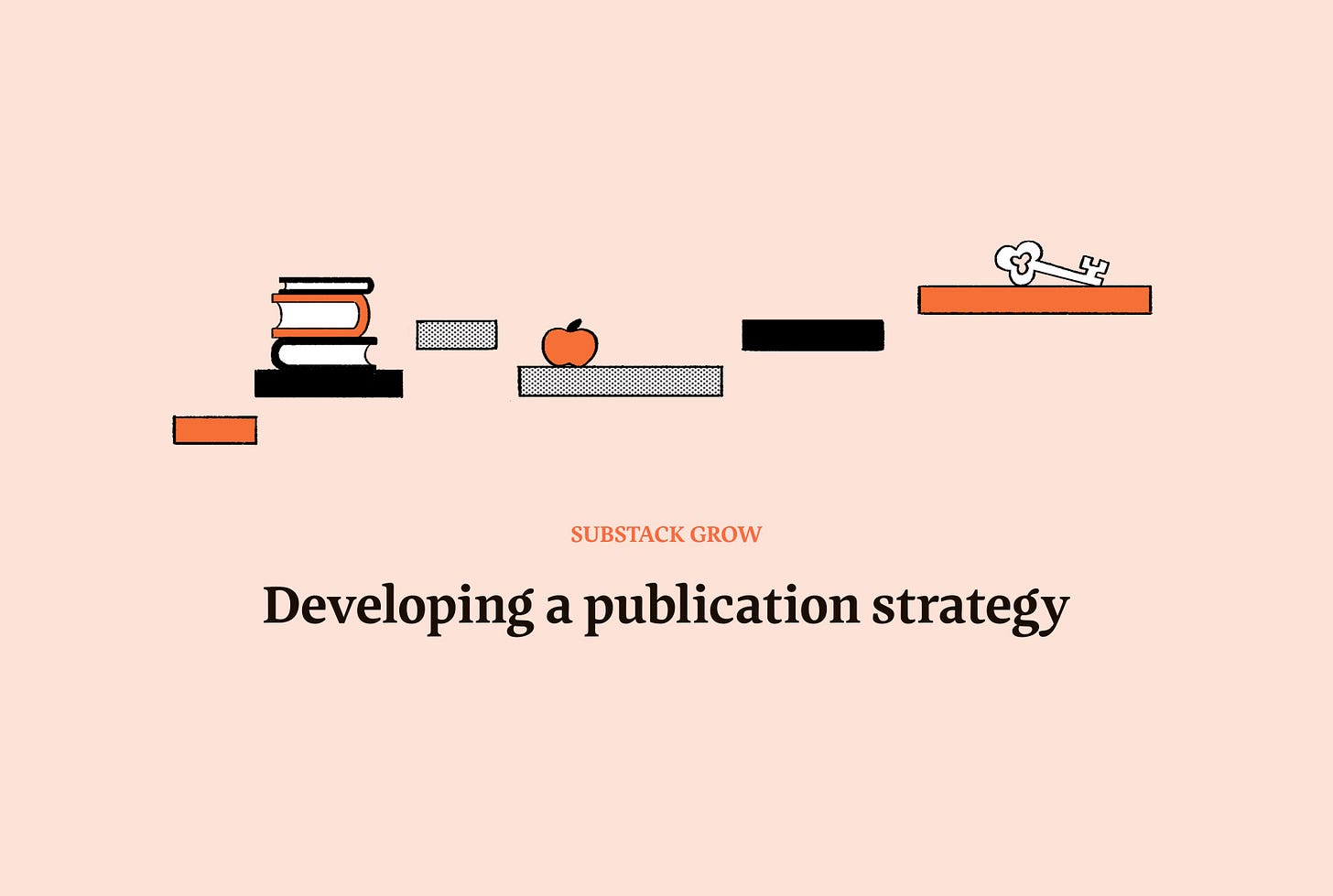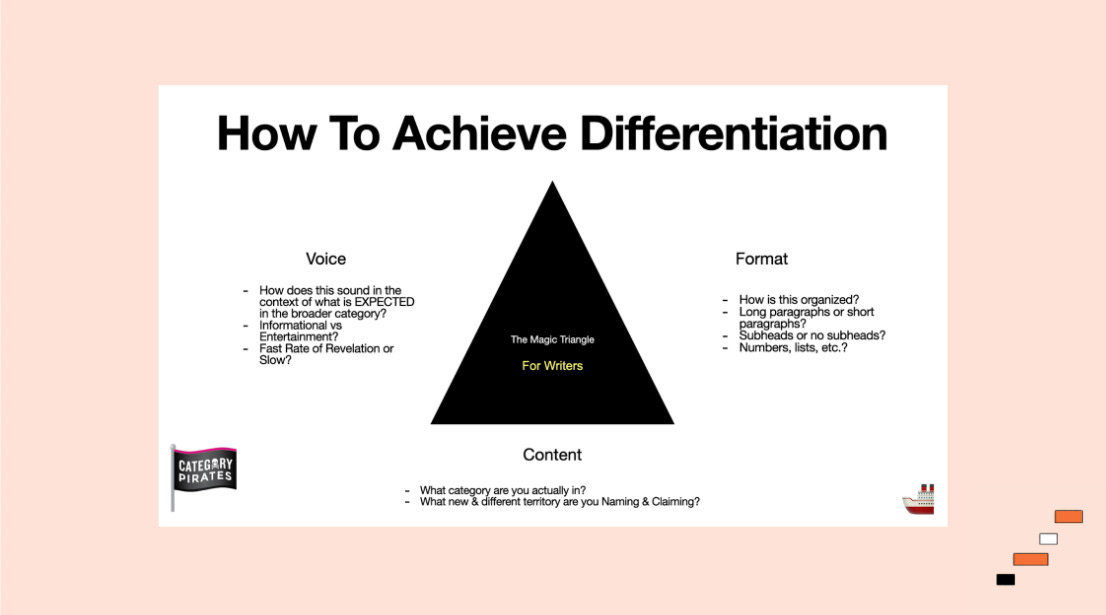This is the second in a series of six posts designed to share the essential knowledge writers need to go independent on Substack.
This resource aims to help you understand your current readers and get clearer on what differentiates your publication.
We are taking the time to focus on these strategic elements because we know subscribers don’t pay for a single post or piece of information. Rather, they will pay for ongoing access to you – your unique worldview, expertise, and style, all of which should come through in what you write.
Knowing your readers
The first step in your publication strategy is outlining who your ideal readers are.
To do this, Bailey Richardson, Substack’s Head of Community, encourages writers to answer two deceptively simple questions:
Who does your writing bring together?
Why will people rally around your writing?
Newsletters, like other subscription-based media, perform best when they’re highly targeted to your readership – if you’re writing for everybody, you’re writing for nobody.
Ask yourself: Who are your most important readers? What are they like? And of those, who brings the energy now?
Describe this group of people in 1-2 sentences.
Include the key traits they bring as readers (e.g. relevant skills, interests, experiences, or backgrounds)
Bonus: Add specific names/personas to bring these readers to life. For inspiration from writers who have cognitive clarity about who their readers are, check out Heated (“A newsletter for people who are pissed off about the climate crisis.”) and Femstreet (“Where women in tech lead, shape and fund the future.”).
Now that you know your “who,” ask yourself, “Why will readers return to your writing?” Jot down your answers to these questions:
What does this group of readers need more of?
What’s the change they desire?
What’s the problem they could solve together?
If you need help, consider some of these reasons why readers might rally around a publication:
Writers who have a clear grasp of why their readers tune into their writing include Neil Shurley of Star Trekking (fandom) and John Warner’s The Biblioracle Recommends (inspiration). Read more about how to build a reader community here.
Differentiating your writing
Once you have a better understanding of who your writers are and why they are drawn to your Substack publication, it’s time to refine your answer to a third question: What will you offer these readers?
According to Nicolas Cole, one of the writers behind Category Pirates, it’s essential to consider what makes the writing you’re publishing different from what else is out there.
Nicolas has identified three approaches writers can take to differentiate their work:
Have a distinct voice, which Nicolas describes as “how your writing sounds.”
Could you establish a unique voice, tone, and style?Develop refreshing content, described by Nicolas as “the words you are using.”
Are you writing about different topics and categories than other writers?Have a unique approach to formatting, the presentation and organization of your writing.
Are your posts structured differently from other writers in your field?
To keep learning from Cole, you can subscribe to his Substack, Category Pirates.
If you’re struggling to pinpoint what makes your work different, one of the best ways to identify your strengths is by listening to your readers or even explicitly asking for feedback. Think back to comments, questions, or replies you’ve received in the past.
What have readers said they like most about your writing voice?
What has your most popular content been?
What topics or categories do readers often ask to hear more about
Experimenting with post types on Substack
Once you’ve defined your audience and differentiation strategy, you can crystallize it in the types of posts you publish on Substack.
You can use Substack’s various multimedia and styling tools to write in the way that is most engaging for your audience and their needs. For example, busy readers might enjoy audio versions of posts that they can listen to while multitasking or link roundups of recent news. Meanwhile, readers searching for community might enjoy open discussion threads to talk to other readers.
Many writers publish different post types on different days of the week. Changing up formats can help combat writer’s block and burnout, and readers will find the variation refreshing as well.
Here are more examples of different post types and publications for inspiration:
Podcasts (e.g. TrueHoop, New Things Under the Sun)
Edited interviews (e.g. Culture Study, Tone Glow)
Discussion threads (e.g. The New Fatherhood, Apparently)
Link roundups (e.g. Maybe Baby, Liberty’s Highlights)
Virtual events (e.g. The Isolation Journals, Bad At Keeping Secrets)
Comics and illustrations (e.g. Drawing Links, Abhijit’s Sketchnotes)
Music (e.g. Wu Fei’s Music, 3 by 7)
Audio readings (e.g. New Things Under The Sun, Ælfgif-who?)
Learn more about Substack’s audio tools, discussion threads, and multimedia embeds.
Free vs. paid strategy
We’ve now walked you through the first three stages of building a publication strategy: clarifying who you are writing for, internalizing why those readers are drawn to your writing, and planning what formats of writing you will offer. Next, we’ll talk about which posts you should offer for free, and which you should offer only to paying subscribers.
We recommend making your best work free and available to everyone.
This approach might seem counterintuitive, but by making your showstoppers free, you’ll grow your audience and bring in newcomers faster. These free pieces should be the polished pieces with the broadest appeal and chance at going viral. They should be the prime examples of what you have to offer.
As Isaac Saul, writer of Tangle, puts it in a Twitter thread on growth:
“The more content available to the masses the more shots I have at bringing in new readers. Several times, I’ve unlocked subscriber-only content that was really popular just to get more eyes on it – and then used that content as an advertisement. It works.”
If free posts are the main concert, think of paid posts as the backstage pass.
Once readers are already bought into your knowledge and value as a writer, they’ll pay to be a community insider – or even just to support your career. It can feel like a big lift to produce even more writing for paid readers, so we encourage writers to see subscriptions as an opportunity to diversify your offerings and experiment with new formats.
For example, your paid posts might be more in-depth investigations for people who already have context about your other work, or they might be more personal and experimental, like a conversational podcast. You might lift the veil on your writing process, bringing paid readers “behind the scenes,” or give them an early look at time-sensitive content like stock picks or breaking news. Another popular approach is to use the paid subscription to build a sense of community: you could host AMAs, discussion threads, advice columns, or exclusive subscriber events.
In a data deep dive, our team found that on average, the open rate was 25% higher for paid versus for free content. Your paid subscribers want to engage: treat them accordingly!

Health check
Congratulations! By taking the time to consider the questions shared here, you’ll develop added clarity and confidence in your publication strategy.
That said, we know this strategic work demands a lot of thinking and not much doing. So while we have you, let’s take some concrete action.
Here are a few quick things you can do to get your publication in shape:
Update your publication title and one-line description to reflect your pitch. We give more tips and examples on writing a clear and compelling one-liner here.
Update your publication tags in your Settings page. Usually, broad tags like “fashion” or “engineering” work better than specific ones like “thrift shopping” or “developer tools.”
Pick an editorial schedule. We recommend publishing at least once a week for each of your free and paid audiences, and it’s best to stay consistent with day and time. For example, Substack writer Elle Griffin recently shared the content calendar she created for herself in Google Sheets.
Add your publication schedule to your About page and the Subscriber benefits section of your Settings page. For example, Platformer publishes “5PM PT Monday through Thursday,” and Flow State sends new music every weekday at “3AM ET so they’re ready for you when you start work.”
Finally, we hope that the Substack writer community is another resource you can lean on for learning and support. Join us on Thursdays for our Office Hours, where the Substack team, and your fellow writers, gather to answer questions live about publishing, growing, or going paid on Substack.
This post is the second in a series of six posts that will share the essential knowledge writers need to go independent on Substack. The first was “Start by setting goals.”
The material is based off the curriculum for Substack Grow, a six-session crash course for writers ready to pursue independence by building a loyal readership and kickstarting paid subscriptions. “Developing a publication strategy” was Session Two. Learn more here.
Do your best work, supported by your subscribers on Substack.




